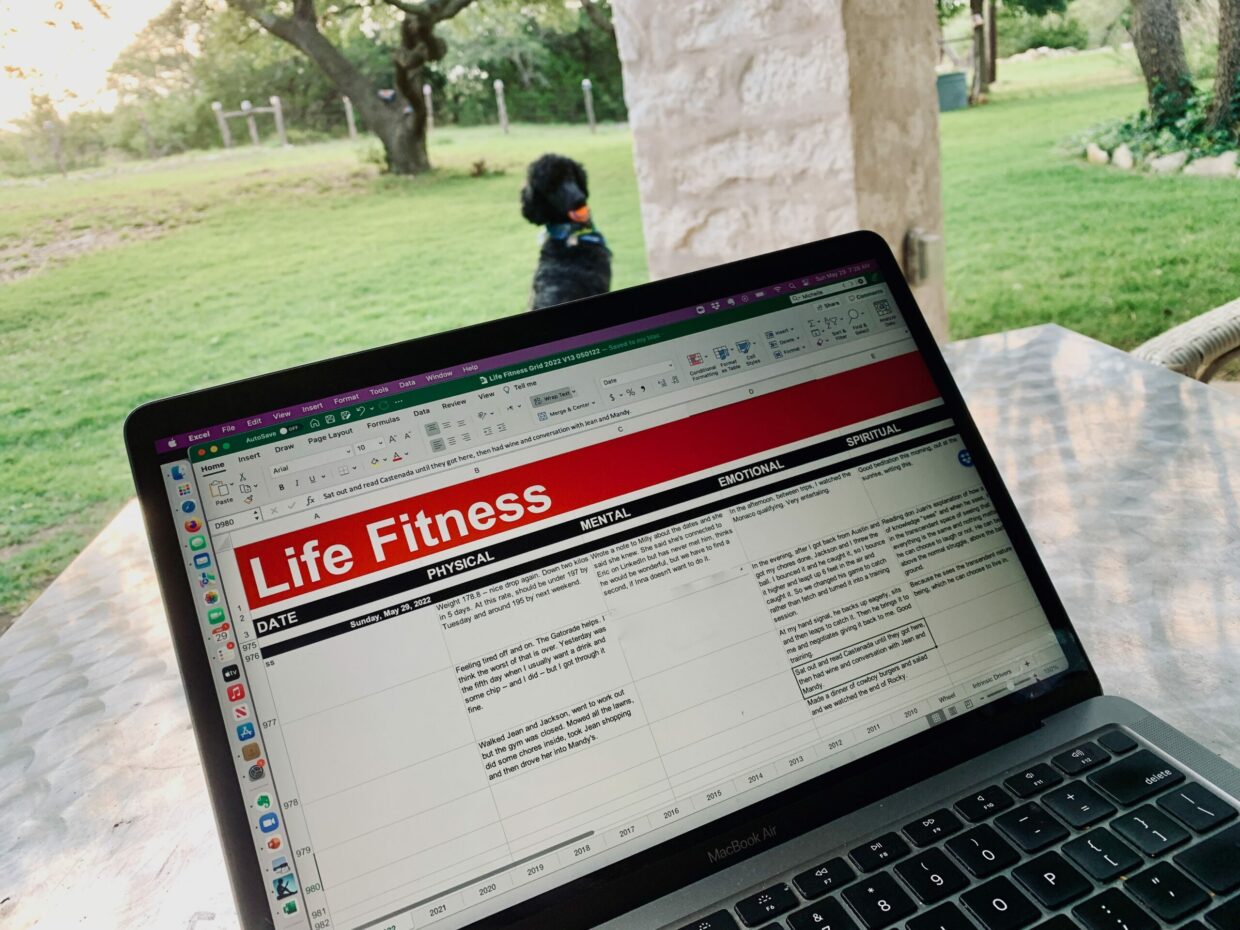Thinking Short and Long
When I was learning to drive a car, someone told me that it was safer to keep your eyes locked on the furthest bit of road you can see. I remember thinking that advice didn’t make much sense. That point way up there where the road curves up into the forest? That’s not where I need to be focused, what about the part of the road that’s right in front of me?
Over time though, I started hearing more support for the theory. In Garth Stein’s wonderful novel, The Art of Racing in the Rain, he writes that “Your car goes where your eyes go … The driver who cannot tear his eyes away from the wall as he spins out of control will meet that wall; the driver who looks down the track as he feels his tires break free will regain control of his vehicle.”
Then, a couple of years ago, the county repaved Ranch Road 12, which leads out of our valley and north to the town of Dripping Springs. It’s an eleven-mile journey on twisty two-lane road with lots of elevation changes. And there are rumble strips, two yellow lines at the center and a single white one on the outside edge of edge of each lane. It’s hard to stay inside those lines and from my front porch, a mile east of the road, I can hear sometimes when a car or pickup runs over those strips.
So, I decided to try keeping my eyes focused on the farthest bit of road ahead and see what happened. To my surprise, after two trips I could stay between the lines the whole way up and back. There was only one section, a tight but fast turn that cuts the view ahead to about four car lengths, where I would sometimes hear my tires touch the strips.
Looking far down the road made me more accurate in the short distance in front of me. And I noticed that even without taking my eyes off the long view, I was more aware of things in the middle distance, a deer grazing on the side of the road or a car drifting close to the center line.
What caused my attention to expand like that when my eyes were fixed on a distant point?
And there was one more thing: race drivers have to be looking at the farthest point of vision ahead, but they also need to see who’s coming up behind them so they can defend their position if someone tries to pass. How do you do that if your eyes are focused far ahead?
What I discovered was interesting. A quick glace in the mirrors as I start out and those three mirrors are fixed in my peripheral vision. Without taking my focus off the long view, I can also register everything going on back there, from the color of the car coming up behind me to its blinkers flashing as he slows to make a right turn.
So, focusing on the long view changes how I experience the short view. But it does one more thing that I wasn’t expecting: it focuses and quiets my mind. My inner chatter shuts off and I’m only thinking about what’s out front and what’s around me.
That made me think about this question: what can this teach us about life and leadership?
To find out, I started discussions with colleagues and clients to see how this experience works. How can this “thinking short and long” improve our focus on, say, the year ahead? And how can we use this to improve our performance at making the right choices of where to put our attention?
Here’s where our thinking is now.
Frame the destination first
Let’s say you’re setting off to drive from Austin to Santa Fe, or Paris to Rome, long drives that require preparation and planning. You choose a route, you plan what to take, you think about what you’ll do on the way. But when you’re driving and halfway there, you’re not looking at that destination, you’re looking at that place a mile ahead where the cars in front of you are dropping out of sight as they crest a rise.
Or suppose you’re planning to open a new location for your business, a second office or your fifth store. The destination planning is similar. You set a target day to open, you plan out what you’ll need in the facility, where you’re thinking of locating, and how you will fund the project. Then you start doing the work it will take to get there.
That’s a distant location that you can’t see yet. It’s too far away. So how far ahead should you be thinking when you sit down at your desk in the morning?
Thinking Long
On that drive up to the mountains, your eyes are on the farthest part of the road that you can see ahead, not on the distant hotel you’re heading to. In organizational terms, what does that translate to? Opening that new location, you figure, will take about a year and the team is already working on it. But your focus today is maybe a month out, you’re focused on the short list of things that will get you from, say, December to the things that need to be completed by January to keep the project on track.
That may not seem like a long vision but remember we’re not focused on the destination right now; we’re focused as far as we can see ahead of us. In this example, that’s probably seeing how the road takes a little twist through the holidays ahead and then straightens out for a couple of weeks after New Year, before it drops out of sight.
From that vantage point, something interesting occurs: your view of the middle distance becomes sharper. You notice things down the way that need your attention now. Maybe a key team member is taking a vacation that starts a week before the holidays, or something you need for the project will take longer to arrive than you expected. You start making course corrections. You speed up or slow down. You react to what comes into view.
Thinking Short
Taking the long view changes how you see the things that are right in front of you. You look at the 25 things on your to-do list and see instantly which of them matter most in this moment. There’s a critical phone call you need to take, there’s question you need to ask, there’s a contract you need to read carefully.
And everything else will have to wait.
An hour later, how you see the remaining 22 thing on that list will change again, particularly since thinking short and long causes you to see two new things that need to get on that list. But they’re not on the short list yet: first, there’s an invoice you have to get out the door, a call to the attorney on that contract, a short drive with a team member to look at a potential site.
Noticing What’s in Your Mirrors
Thinking short and long makes it clearer when something is coming up behind you that needs your attention. There was something no one thought about in the long-term planning that may be about to bite you, and you need to take immediate action. A competitor announces that they are opening a new location of their own, in the exact neighborhood you were considering. How does that affect your search? Maybe it’s better to have both of you driving interest in that area. Maybe it’s not.
Agility is suddenly easier because you’re so clearly focused on where you are in the moment. You have the long view of the next few weeks. You have the short view of the next few days or the next few hours. You have the view of what’s in your mirrors. All that gives you a clarity that makes course corrections faster. Your thinking is more precise and more effective.
I described the quiet mindset that comes from focusing on both the sharp distance and the blurred periphery. In that mindset, the subconscious mind is doing a lot of creative work in the background, graphing solutions it can feed you when needed. In a similar way, thinking short and long sharpens your executive mind, making it easier to think fast and adjust on the fly without upsetting the balance of progress. In racing terms, you have an almost subconscious way to make instant course corrections without losing momentum.
Like Garth Stein wrote, because your eyes are on the road ahead, you don’t spin out. You go where your eyes are.








